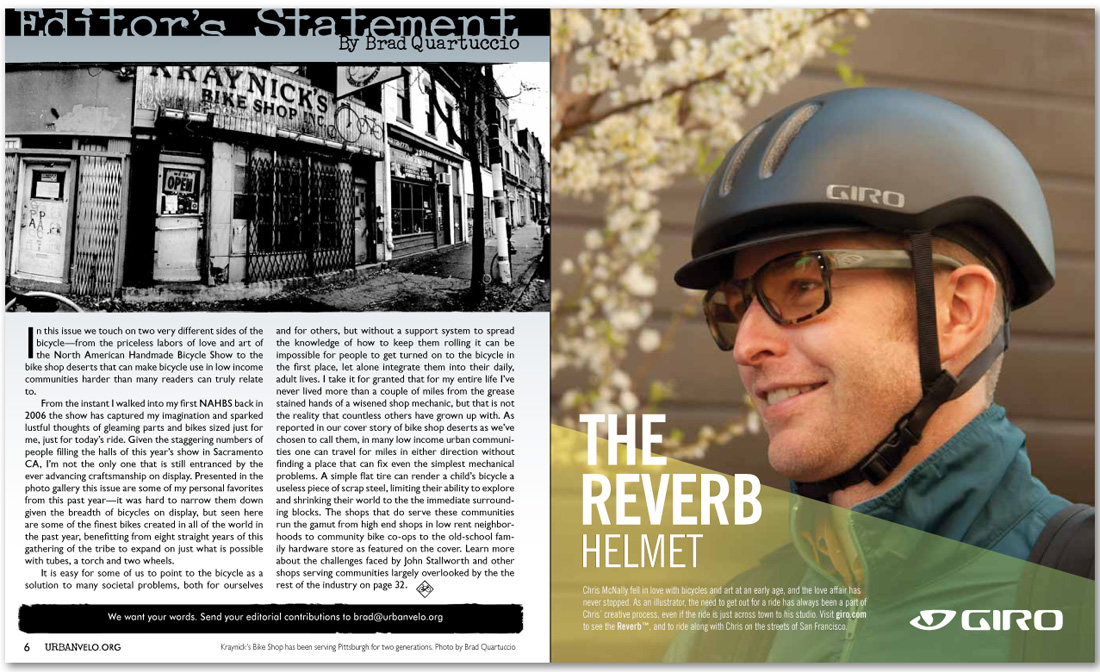


Editor’s Statement
In this issue we touch on two very different sides of the bicycle—from the priceless labors of love and art of the North American Handmade Bicycle Show to the bike shop deserts that can make bicycle use in low income communities harder than many readers can truly relate to.
From the instant I walked into my first NAHBS back in 2006 the show has captured my imagination and sparked lustful thoughts of gleaming parts and bikes sized just for me, just for today’s ride. Given the staggering numbers of people filling the halls of this year’s show in Sacramento CA, I’m not the only one that is still entranced by the ever advancing craftsmanship on display. Presented in the photo gallery this issue are some of my personal favorites from this past year—it was hard to narrow them down given the breadth of bicycles on display, but seen here are some of the finest bikes created in all of the world in the past year, benefitting from eight straight years of this gathering of the tribe to expand on just what is possible with tubes, a torch and two wheels.
It is easy for some of us to point to the bicycle as a solution to many societal problems, both for ourselves and for others, but without a support system to spread the knowledge of how to keep them rolling it can be impossible for people to get turned on to the bicycle in the first place, let alone integrate them into their daily, adult lives. I take it for granted that for my entire life I’ve never lived more than a couple of miles from the grease stained hands of a wisened shop mechanic, but that is not the reality that countless others have grown up with. As reported in our cover story of bike shop deserts as we’ve chosen to call them, in many low income urban communities one can travel for miles in either direction without finding a place that can fix even the simplest mechanical problems. A simple flat tire can render a child’s bicycle a useless piece of scrap steel, limiting their ability to explore and shrinking their world to the the immediate surrounding blocks. The shops that do serve these communities run the gamut from high end shops in low rent neighborhoods to community bike co-ops to the old-school family hardware store as featured on the cover. Learn more about the challenges faced by John Stallworth and other shops serving communities largely overlooked by the the rest of the industry on page 32.